All published articles of this journal are available on ScienceDirect.
Decrement in Swimming Performance with Added Burden of Outer Clothing
Abstract
Background:
Most drowning occurs after an involuntary fall into open deep water. Thus, the victim is usually wearing outer clothing. The added burden of clothing may reduce the chance of survival.
Methods:
Grade Four children (n = 490) swam a 200 m combined test, twice, half with outer clothing first, half without. The test included jump or dive into deep water, swim 100 m on the front, stop and rest 3 min front and back, swim 100 m on the back and climb out over edge of pool. Each skill was scored from 0 to 2.0, a perfect score being 12.0. The Wilcoxen Signed Rank test was used to test the significance of the difference between treatments. Total scores with and without outer clothing were correlated using the Spearman rho.
Results:
The average total scores were 10.65 without outer clothing and 8.55 with (of 12.0). The Wilcoxen Z score was 2.79, statistically significant at p = 0.005. The Spearman rho between the two scores was 0.41. Of those who were judged able to swim without outer clothing, a significant number were judged unable to swim with outer clothing. This was true at whatever level “can swim” was arbitrarily placed. Among those who scored best, the difference between without and with clothing was considerably less than among those who scored poorly.
Conclusions:
The added burden of clothing significantly affected skill performance. It cannot be assumed that one who can swim without outer clothing, can swim with. The moderate correlation between scores suggests that economical movement may be the quality which transfers from without to with clothing.
1. INTRODUCTION
Most drowning occurs after an involuntary fall into open, deep water. Thus, the victim is usually wearing outer clothing. The added burden of clothing may reduce the chance of survival. Interviews with drowning survivors suggest that being unaccustomed to swimming or floating with clothes was a major problem leading to their near death [1].f
Being in, on or close to water is simply part of the daily life of many people in middle and low income countries. This includes transport, fishing, simply living in a setting exposed to open water, children having to cross a river to go to school, parents to work or to their fields. In high income countries where transport and fishing also bring people close to the water, these activities are more highly regulated, less risky. (See Figs. 1 and 2) However, in high income countries, recreational activities draw many people to the water and for example in some of the Nordic countries and parts of northern Europe, the leading cause of death by drowning is falling from a boat during recreational activities, often with alcohol involved [2].
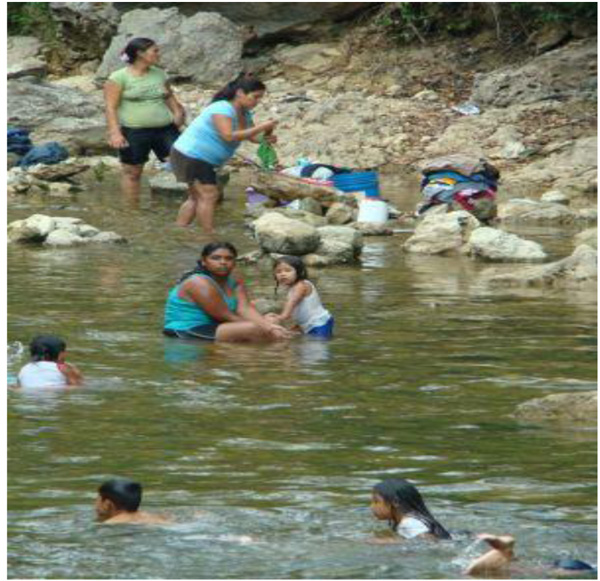
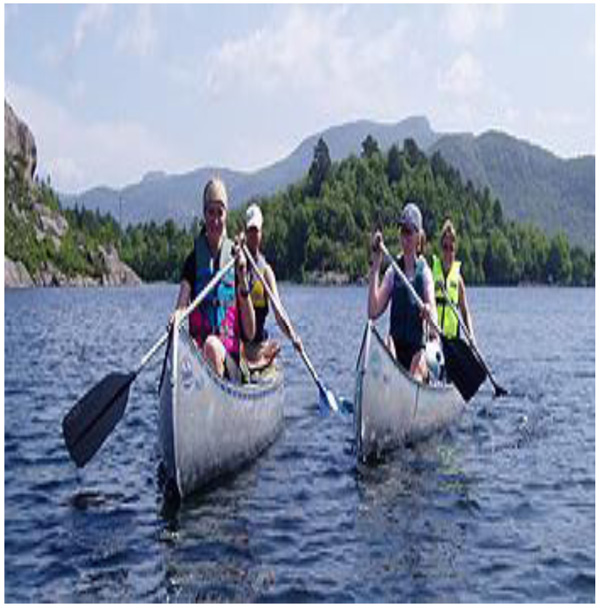
Some assume that swimming with clothing is the same as swimming without and that no special effort needs to be made to teach it. Yet drowning survivors have told us the opposite, in an ex post facto reflection on their negative experience when involuntarily submerged with clothing. Choi et al. [3] have shown that swimming with clothes requires from 1.4 to 1.8 times greater energy cost than swimming only in a swimming costume – when the swimming velocity is constant. They examined three different strokes and at three different velocities (0.3, 0.5 and 0.7 m/s) and found elementary backstroke to have a higher metabolic cost than crawl and breaststroke, both with and without clothes. They also found that the burden increased exponentially with increased velocity. In a pilot study, Laakso et al [4] had previously quantified significant skill reduction with the added burden of clothing. Barwood et al [5] demonstrated that clothing traps sufficient air that in the first min after immersion, buoyancy is actually improved and that the distance of mouth and nose above the surface (free board) is greater than without clothing. They recommend float first as a survival strategy to help avoid or to diminish the reflexive gasping and runaway respiration rate and potential hyperventilation which can be a sudden reaction to immersion in cold water i.e., cold shock response [6]. According to Golden and Tipton [7] and Ducharme and Lounsbury [8] heat loss is reduced when wearing clothing. If a Personal Flotation Device (PFD) is available, adopting the Heat Escape Lessening Posture (HELP) technique (see Figs. 1 and 4 below) gives a further reduction in heat loss [9, 10]. In a short term training study, competitive swimmers (inexperienced in swimming with clothes) achieved a significant reduction in energy cost of swimming with clothing after only one week of daily, short bouts of training [11]. Unexpectedly, a training group in this study which only viewed a video of swimming with clothes, also daily, improved significantly. Inexperienced swimmers probably would not have experienced the same as these experienced competitive swimmers, for whom efficient movement without clothing was already in place. This needs further investigation.
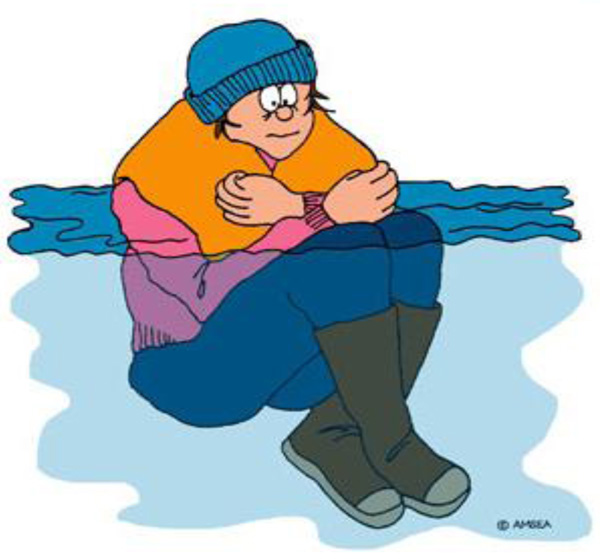
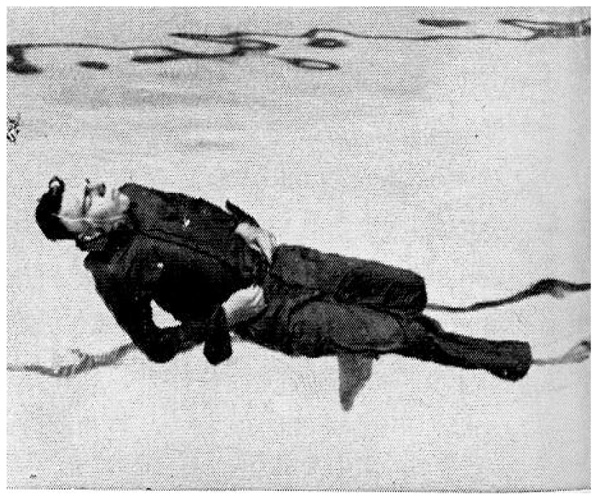
Previously, swimming with clothes was considered sufficiently difficult that people were consciously taught the removal of clothing and their use as buoyant aids [12]. Greater awareness of hypothermia in the 1960’s and 1970’s and later of the cold shock response in the 1980’s and 1990’s, has caused many to rethink the wisdom of removing clothing. Today it is usually recommended that one should retain clothing as protection against cold shock, heat loss, eventual hypothermia and to benefit from increased buoyancy. However, both retaining and removing clothing deserve greater scrutiny and reflection. Recently, in an educational proposal, it has been suggested that neither removing nor retaining clothing is the simple, single solution [13]. According to Ducharme and Lounsbury [8], the latest advice is to carefully assess alternatives, after cold shock has been controlled, but early after the immersion. Newer evidence suggests that people are relatively accurate in their assessment of how long self rescue may take and are capable of swimming longer even with clothing than previously thought. Unlimited floating, even with clothing and a PFD, is probably not the only option. Swimming may still be in some cases, a viable option (See Figs. 5 and 6).
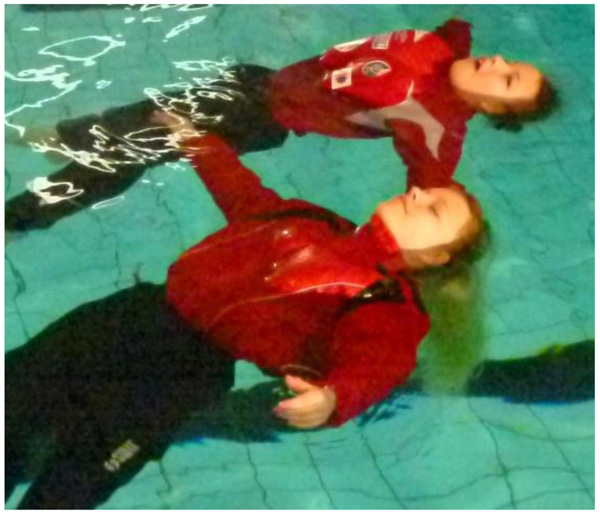
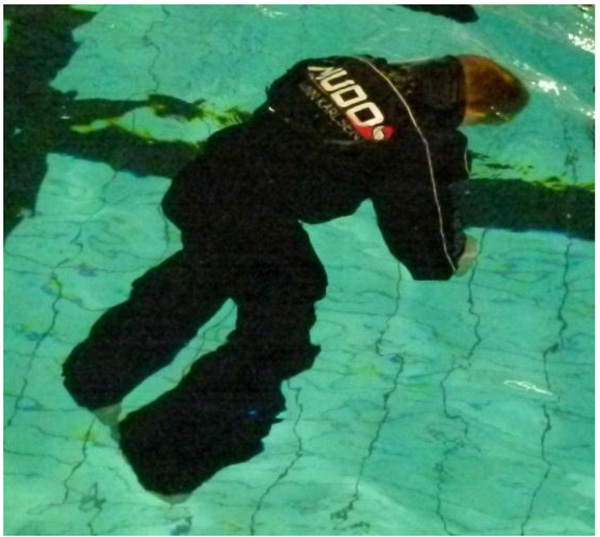
2. METHODS
With a previously recommended definition of swimming as the starting point [1], a combined test was designed as an operationalization of the definition [4, 13]. This test is only a representation of the definition, not a definition in itself, designed to be easily administered. Information can then easily be gathered with the intention of evaluation of a large number of children and perhaps also the effectiveness of teaching. The test used is one example from a test model which retains its format throughout though details are adjusted. Regardless of total distance, half is swum on the front and half on the back. As the total distance increases, the length of time for stop and rest increases. At the shortest distances (15 – 25 m) jump into deep water is sufficient. As the distance increases, we would expect children and youth to dive and at about 200m they should be able to simulate a fall into deep water [14] (See Figs. 7, 8 and 9).
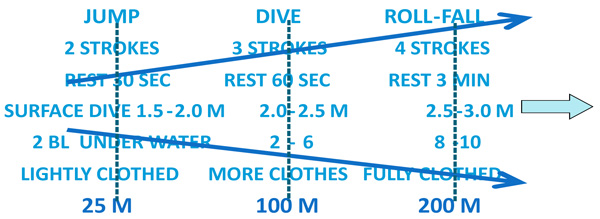

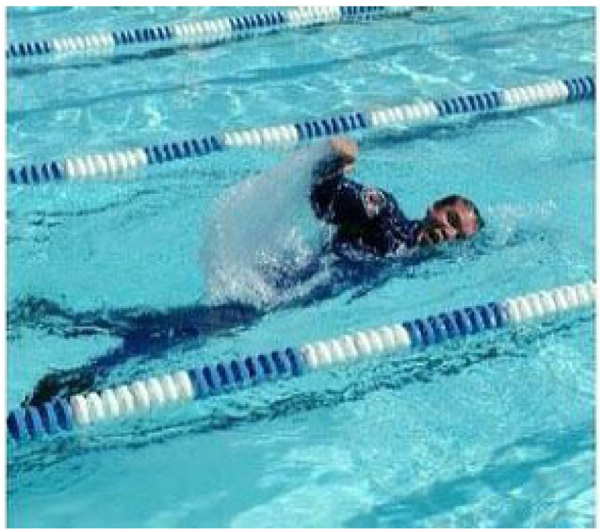
Grade Four children (n = 490) swam the 200 m combined test, twice. These two trials were conducted within one week of each other to reduce learning effect. Half randomly swam with outer clothing first, half without, again to reduce bias. The test included jump or dive into deep water, swim 100 m on the front, stop and rest 3 min (half on front and half on back), swim 100 m on the back and climb out over edge of pool. Each skill was scored from 0 to 2.0, a perfect score being 12.0. All who scored 0 points or twelve points, were eliminated to avoid a fixed floor or ceiling effect. The same test person conducted all testing.
The Wilcoxen Signed Rank test was used to test the significance of the difference between scores in relation to the two treatments (with and without outer clothing). Total scores with and without outer clothing were also correlated using the Spearman rho. This process was repeated separately for the upper one half of the subjects and the lower one half of the subjects, to examine whether or not, in this case, the most experienced and the least experienced suffered a similar decrement in skill because of clothing (See Figs. 10 and 11).
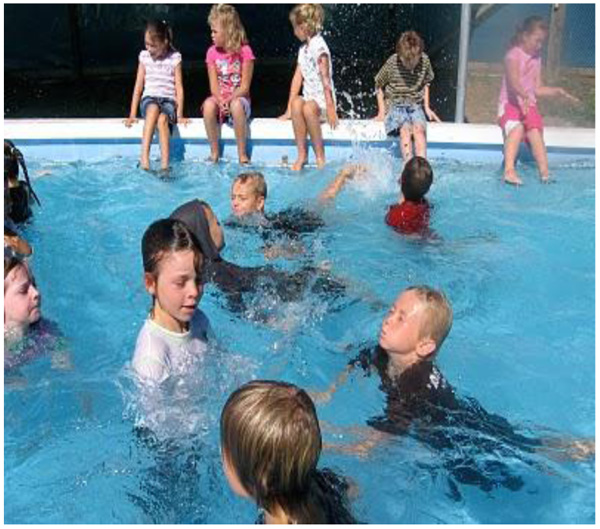

3. RESULTS
The average total scores were 10.65 without outer clothing and 8.55 with (of 12.0). The Wilcoxen Z score was 2.79, statistically significant at p = 0.005. The Spearman rho between the two scores was 0.41. Of those who were judged able to swim without outer clothing, a significant number were judged unable to swim with outer clothing. This was first done with a score of eleven of twelve as the criterion for can swim. The rationale for this choice was based on the definition of can swim from which the test was derived. This process was repeated at several stages with lower scores. The same result was found at whatever level “can swim” was arbitrarily placed. Finally, among those who scored best (the upper one half), the difference between without and with clothing was considerably less than among those who scored poorly (the lower one half).
4. DISCUSSION
In this study, the added burden of clothing significantly affected skill performance, and swimming with clothes in an educational setting is often neglected. When included, it is often an after thought. The nuances of this essential activity are often not well understood. Pupils may not enjoy it as a direct result of poor planning, timing or lack of enthusiasm and knowledge of the teacher. Yet when well planned and well taught, and starting early, they find it both challenging and entertaining. Many organizations supporting aquatic activities, have a history of including swimming with clothes and removing clothing [12]. There is no single answer to the question of whether to remove or to retain clothing in an emergency. It now seems logical, especially considering the overwhelming research evidence on heat loss and the insulative quality of clothing that in most cases, clothing should not be removed. However, there may still be some rare situations where clothing should be removed.
The rationale for retaining disrobing as an important skill to teach and to learn, is that a) it may still be necessary in some unusual circumstances, b) it is the mirror image of putting clothes on and accelerates learning to dress in the water (it is entirely possible that in a situation where it would be advisable to retain clothing, a person not clothed is able to take clothing with them as they are about to fall into deep water, e.g. an oil platform or cruise ship accident), c) it is one of the very best adaptation/confidence skills, placing demands on breath control, buoyancy control, balance, coordination, posture control. This added demand stimulates development of these foundational qualities (See Figs. 12 and 13).
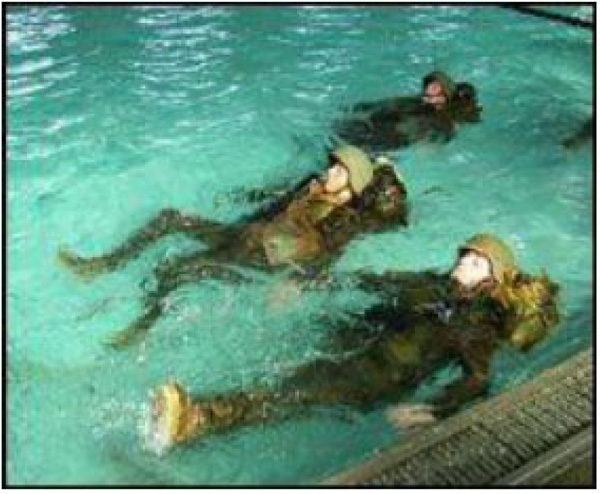
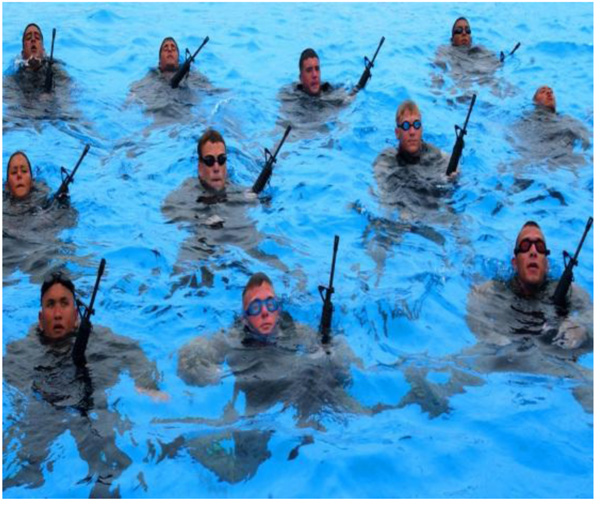
CONCLUSIONS
The result showed, that it cannot be assumed that one who can swim without outer clothing, can swim with. The moderate correlation between scores as well as the fact that the better subjects had a smaller difference between the two treatments, suggests that economical movement may be the quality which transfers from without to with clothing. Indirectly, this resembles the results obtained by Tipton et al. [15] when they demonstrated that more experienced lifeguards suffered the least decrement in physiological parameters when moving from pool to open water and then surf. Above all, the ability to move economically in the water both without and with clothing, allows the victim of an unexpected fall into deep water, a choice as to course of action. As to what to teach, we recommend the following, in this order:
- Start early with routine use of light clothing, gradually increasing the amount of clothing and the challenges while clothed.
- Teach economic movement without clothing. Remember that economic movement is dependent on economic breathing and buoyancy control.
- Teach economic movement with clothing. This can and should be integrated into the teaching without outer clothing, rather than after.
- Teach removal of clothing in a relaxed and comfortable way, while survival floating.
- Teach putting clothes back on, in the water, as above. Points 4 & 5 can be combined. The learner can simply remove clothing and then while continuing to float, put the clothing back on.
- Teach the use of clothing as a buoyant aid.
- Teach the use of clothing plus a PFD.
- Teach the H.E.L.P. position.
- Teach various ways of swimming with clothing and PFD.
ETHICS APPROVAL AND CONSENT TO PARTICIPATE
Not applicable.
HUMAN AND ANIMAL RIGHTS
No animals/humans were used for studies that are the basis of this research.
CONSENT FOR PUBLICATION
Written informed consent were obtained from all participants.
CONFLICT OF INTEREST
The authors declare no conflict of interest, financial or otherwise.
ACKNOWLEDGEMENTS
Declared none.


